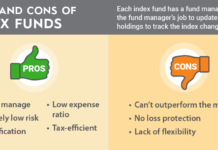When you want to invest in pooled funds, mutual funds, and Exchange Traded Funds (ETFs) are among the major pooled investment, you’ll come across. Knowing the difference between these two is the key to a good investment.
There is a lot of similarity between ETFs ( Exchange Traded Funds) and mutual funds. The two use the same pool fund investment strategy that bundles together several investors under one investing umbrella or group. That pooled investment fund features a variety of investment vehicles like stocks and bonds. The main goal of this strategy is to offer investors a diversified portfolio at lower costs.
However, there is a difference between ETFs and mutual funds, especially in their management strategies. Below are the major differences between these two;
1. Management Strategies
ETFs usually involve passive management and simply track an indexed fund. These funds can track major indexes like the Nasdaq 100 and the S&P 500. While there are actively managed ETFs, they are few but come at a higher cost for the management costs.
On the other hand, mutual funds are actively managed where fund managers can freely make decisions on the allocation of assets in the fund. The goal of active management is to outdo the market, but this involves higher costs.
2. Trading Strategies
Although ETFs track an index fund, they are tradable during the day like ordinary stocks. The prices for ETFs depend on the demand and supply in the market. That means that you might probably pay a commission. Also, you are required to hold the ETF for a few days before trading it to avoid paying brokers a fee.
Even when they track an index, mutual funds are always traded and priced at the end of the trading day.
3. Taxation
ETFs are more efficient tax-wise due to the passive management strategy, which means lower transactions. Second, ETFs involves buying and selling the assets directly from other investors, leading to capital gain taxes based on a single sale.
For mutual funds, capital gains are usually distributed among investors, meaning the taxes are also distributed among investors. That means the tax passes to every investor, whether they have traded their shares or not.
4. Minimum Investment Amounts
ETFs have a lower investment amount where you can buy per share. That allows anyone to start investing and add their position with time. However, most mutual funds will require an investor to have a minimum amount of $500 or $1,000.
5. Expense Ratios
Expense ratios are an indication of how much an investor pays everywhere to own an investment fund. It’s showed as a percentage of the amount you invest.
EFTs have a lower expense ratio than mutual funds due to the passive management strategy, while actively managed mutual funds carry a higher expense ratio.
Some ETFs can carry an expense ratio as low as 0.2% or lower, meaning an investment of $10,000 has an expense of $20. Mutual funds can go over 1%, which leads to an expense ratio of $100.
Which is better?
Each of these investments has its advantages and disadvantages and will suit different investors. While both offer you an opportunity to diversify your portfolio, mutual funds might come with a higher cost and tax implications than ETFs. ETFs also allow an investor to invest in other niches that most mutual funds do not cover. However, mutual funds are easy to understand and more accessible compared to ETFs.
If you are starting your investment journey, have a long term investment goal, or look for a tax-advantaged investment for your retirement, mutual funds are ideal. On the other hand, ETFs are suitable for investors with a short-term investment goal or anyone looking to invest in a particular niche market.
It’s also possible to combine these two in your investment portfolio for more diversification. You can use ETFs to track particular market indexes, while mutual funds are for active management. Whichever investment fund you settle on, ensure it’s in line with your investment and financial goals and your risk tolerance.












